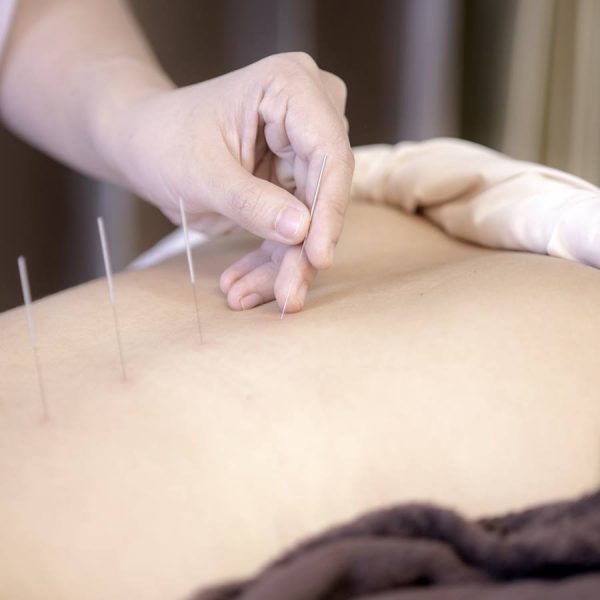While creating a natural program to manage PCOS symptoms, women need lots of options to choose from. PCOS (polycystic ovary syndrome) is rarely responsive to a “one size fits all” approach. Following a PCOS Fertility Diet along with regular exercise is important for anyone who’s been diagnosed. Yet, there are many other natural approaches to explore. This article discusses the role of acupuncture treatment for women with PCOS.
Acupuncture 101
An Asian discipline in practice for over 3,000 years, acupuncture uses fine needles or electrodes to direct body energy (Qi) through the organs and body systems. Acupuncture treatment works in part by encouraging the release of blocked energy. This helps the body systems and organs to return to their natural state of balance and health. Acupuncture eases both chronic and acute stress, promoting more balanced hormones, and improved well-being. Clinically, it has also been found to increase the production of endorphins, natural pain-relieving chemicals in the body (Neuroscience Letters, 2004).
How Does Acupuncture Help PCOS?
An acupuncturist experienced with PCOS focuses on the points of the body meridians that govern the reproductive system and secondary systems like the spleen, stomach or liver. By improving Qi and blood flow in these areas, acupuncture nourishes the reproductive organs and assists with hormone balance and insulin regulation. For some women with PCOS, acupuncture leads to significant improvements in hormone levels, regular menstruation and ovulation.
Research into Acupuncture & PCOS
- One Swedish study finds electro acupuncture helps some women with mild PCOS symptoms to ovulate. While a small trial, researchers from Goteborg University concluded acupuncture helps PCOS by positively affecting the sympathetic nervous system, the endocrine and neuroendocrine systems. In this trial, acupuncture was found helpful for women with PCOS who had lower BMI and less metabolic disturbances.
- A 2018 study published in the journal Acupuncture Research found 12 weeks of acupuncture combined with diet control and exercise was significantly superior to diet control and exercise alone for women with PCOS. The acupuncture group experienced more improvement with reduced fasting insulin, improved insulin resistance and reduced waist circumference. Both groups experienced improvements in testosterone levels, luteinizing hormone, and the ratio between LH/FSH levels.
- A 2018 study published in Chinese Acupuncture and Moxibustion reveals acupuncture used as an adjunctive approach to drug therapy can increase ovulation and shorten the menstrual cycle in infertile women with PCOS. The results also suggest it could help lower BMI, reduce luteinizing hormone, testosterone, and estradiol (E2) levels.
Consider Acupuncture!
As you work to address a PCOS concern, and given this research, we suggest being open to trying acupuncture. Acupuncture treatment is not painful and can be very soothing. Licensed acupuncturists go through years of education and training. Most can also point you to the right herbs and dietary approaches to improve your personal fertility and hormone-health challenges.
- Stener-Victorin E. et al. (2000, March). Effects of electro-acupuncture on anovulation in women with polycystic ovary syndrome. Acta Obstetricia et Gynecologica Scandinavica; 79(3):180-8. Retrieved from: https://www.ncbi.nlm.nih.gov/pubmed/10716298
- Shen, LY et al. (2018, April). Acupuncture Treatment of Polycystic Ovarian Syndrome Patients with Abdominal Obesity by Regulating Dai Meridian: A Randomized Controlled Clinical Trial. Acupuncture Research; 25;43(4):255-9. doi: 10.13702/j.1000-0607.170687. Retrieved from: https://www.ncbi.nlm.nih.gov/pubmed/29888581
- Xu J. et al. (2018, April). Efficacy of acupuncture as adjunctive treatment on infertility patients with polycystic ovary syndrome. Chinese Acupuncture & Moxibustion; 12;38(4):358-61. doi: 10.13703/j.0255-2930.2018.04.004. Retrieved from: https://www.ncbi.nlm.nih.gov/pubmed/29696918
- Han, JS. (2004, May). Acupuncture and Endorphins. Neuroscience Letters; 6;361(1-3):258-61.
Retrieved from: https://www.ncbi.nlm.nih.gov/pubmed/15135942





